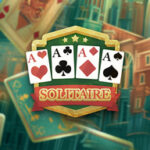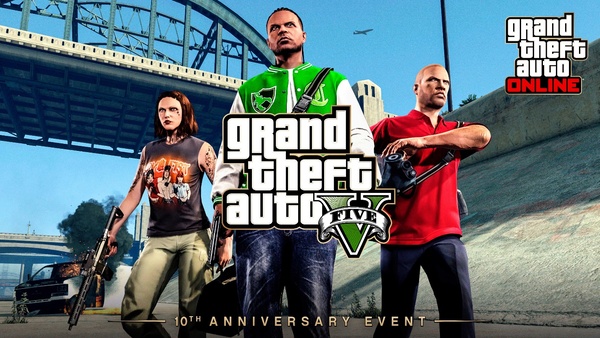League of Legends (LoL) is one of the most significant and influential games in modern esports and gaming culture. Developed by Riot Games and launched in 2009, it revolutionized the Multiplayer Online Battle Arena (MOBA) genre and built a massive global community. This article explores the history, gameplay, competitive scene, and cultural impact of League of Legends through a detailed examination divided into thematic sections. From its origins to the present day, we will analyze what makes LoL enduringly popular, highlight its strengths and weaknesses, and conclude with an expert evaluation and rating.
The Birth and Early Development of League of Legends
League of Legends was created by a team of developers formerly part of the Warcraft III modding community, specifically inspired by the Defense of the Ancients (DotA) mod. Riot Games officially launched the game in October 2009 after several years of development and beta testing. Their goal was to create a stand-alone MOBA with accessible mechanics, constant updates, and a focus on competitive integrity.
Initially, LoL attracted a niche audience of MOBA enthusiasts but quickly grew due to its free-to-play model combined with high-quality gameplay. Riot’s commitment to regular balance changes and new content established a strong foundation for a loyal player base. Early on, the game differentiated itself with polished graphics, a large roster of champions, and a focus on strategic team play.
Gameplay Mechanics and Core Concepts
At its core, League of Legends is a 5v5 team-based game where players control unique champions with specific abilities. The primary objective is to destroy the enemy team’s Nexus, located deep within their base, while defending one’s own. The game map, Summoner’s Rift, features three lanes and a jungle area filled with neutral monsters, adding layers of strategic depth.
Players earn gold and experience by defeating minions, enemy champions, and jungle monsters, which they use to level up and buy items to strengthen their champion. The combination of individual skill, team coordination, and strategic decision-making makes LoL a highly competitive and rewarding game. Different roles, including top laner, jungler, mid laner, ADC, and support, each bring unique responsibilities and gameplay styles to the match.
Champion Diversity and Continuous Updates
One of League’s strongest features is its constantly expanding roster of champions, each with unique abilities, playstyles, and lore. Over 160 champions are currently available, offering players a wide variety of choices that cater to different preferences and team compositions. Riot Games frequently releases new champions and updates existing ones to maintain balance and freshness.
The continual updates extend beyond champions, encompassing game mechanics, items, and visual/audio improvements. This commitment keeps the meta evolving and encourages players to adapt and experiment. Riot also runs regular events and thematic game modes, which add variety and foster community engagement.
The Competitive Scene and Esports Growth
League of Legends arguably pioneered modern esports and has one of the largest competitive scenes worldwide. Riot Games established professional leagues on every continent, culminating in the annual World Championship, which attracts millions of viewers globally. The prize pools and production values of these events rival those of traditional sports.
Professional teams and players have become celebrities within the gaming community, and the esports ecosystem includes coaches, analysts, and broadcasters. The high skill ceiling and team dynamics make competitive LoL exciting to watch and participate in. The rise of esports has also influenced the game’s design philosophy, emphasizing fairness and skill expression.
The Role of Community and Social Features
The League of Legends community is vast and multifaceted, with millions of active players and numerous fan-created content platforms. Riot Games supports social interactions through in-game chat, friend lists, and clubs, encouraging teamwork and friendship. However, the community is also known for its competitiveness and occasional toxicity, which Riot actively works to mitigate through reporting systems and behavioral incentives.
Content creators, streamers, and professional players contribute to a rich ecosystem of guides, entertainment, and educational materials. This vibrant community enhances the game’s appeal and accessibility for newcomers and veterans alike.
Visuals, Sound Design, and Artistic Direction
League of Legends features a distinct art style blending fantasy and modern aesthetics, which has evolved significantly since its launch. The character designs are diverse and creative, ranging from mystical beings to futuristic warriors. Riot consistently invests in visual updates, including full champion reworks and map redesigns, to keep the game visually appealing.
Sound design plays a crucial role in gameplay feedback and immersion, with each champion having unique voice lines and sound effects that complement their abilities. The music and cinematic trailers also contribute to the rich lore and atmosphere, making LoL not just a game but a storytelling experience.
Accessibility and Learning Curve
League of Legends is free-to-play, making it accessible to anyone with a compatible computer and internet access. However, mastering the game requires learning numerous champions, mechanics, and strategies, which can be daunting for new players. Riot has introduced tutorials, practice tools, and beginner-friendly modes to ease this transition.
The game’s complexity and depth mean that players can always find room to improve, contributing to its long-term appeal. Nevertheless, overcoming the initial difficulty barrier is critical to fully enjoying the LoL experience.
Impact on Gaming Culture and Industry
League of Legends has had a profound impact on gaming culture and the broader industry. It popularized the MOBA genre and influenced game design worldwide. The success of its esports model has been emulated by countless games, solidifying competitive gaming as a mainstream entertainment form.
Beyond gameplay, LoL has expanded into music, comics, and even an animated series, demonstrating its cultural reach. Riot’s focus on storytelling and community building sets a standard for how game developers can foster long-term engagement.
Conclusion
In conclusion, League of Legends has shaped the MOBA genre and esports landscape like no other game. Its rich gameplay, ongoing development, and passionate community ensure it remains a dominant force in the gaming world. Whether you seek strategic competition or a social gaming experience, LoL delivers on multiple fronts and continues to captivate millions globally.



























